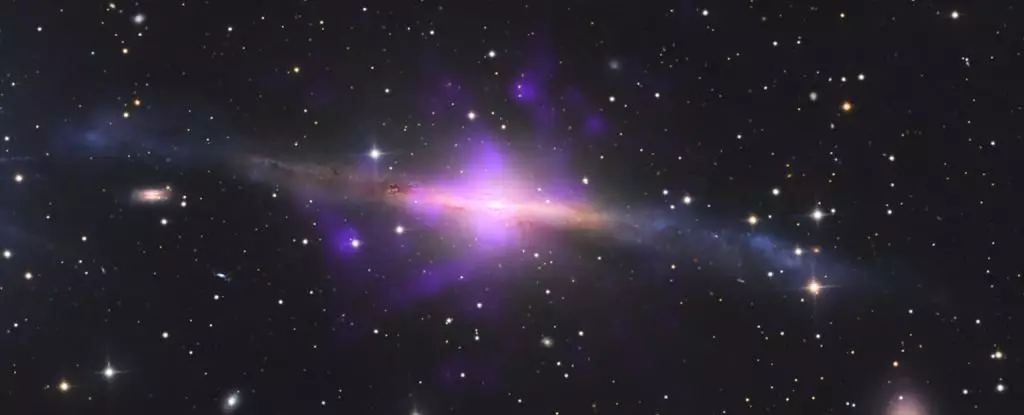In a galaxy not far from our own, NGC 5084 has become the focus of an intriguing astronomical inquiry. Located approximately 80 million light-years from Earth, the galaxy harbors a supermassive black hole, which has been discovered to be inexplicably tipped over. As reported by a team of researchers led by Alejandro Borlaff from NASA’s Ames Research Center, this peculiar orientation—where the rotational axis of the black hole aligns horizontally with the galactic plane—has sparked numerous questions among astrophysics scholars. The phenomenon resembles that of Uranus, which is famously tilted disproportionately compared to its counterparts in our solar system.
This unexpected discovery signals the importance of utilizing long-term observational data to piece together the history of celestial bodies, allowing scientists to retrace cosmic events that are otherwise obscured by the vastness of time. By drawing on archival data collected over three decades, the team delivered a compelling narrative about the fascinating dynamics within NGC 5084.
First cataloged by the renowned astronomer William Herschel in 1785, NGC 5084 has intrigued astronomers for centuries. Identified as a lenticular galaxy, it exists in a cosmic niche between spiral and elliptical types, presenting as a generally amorphous structure rather than possessing clear, large-scale arms like the Milky Way. With an impressive diameter exceeding 200,000 light-years and an estimated mass of about 1.3 trillion solar masses, NGC 5084 stands out among its peers. However, detailed observations of the supermassive black hole residing at its core have remained elusive due to a combination of its edge-on perspective and the bright, dusty material surrounding it.
In an innovative move, Borlaff and his colleagues re-examined decades-old observations from NASA’s Chandra X-ray Observatory. Surprisingly, upon applying cutting-edge image analysis techniques to the data, the researchers identified elongated plumes of X-ray-emitting plasma emerging from the galaxy’s center, forming an unusual ‘X’ shape. This suggests signs of historical activity at the galactic core, providing critical clues into the behavior of the supermassive black hole.
The discovery of these X-ray plumes—two extending vertically above and below the galactic plane and two embedded within—was particularly intriguing. The orientation of all four jets suggests that the black hole’s equatorial plane has transitioned from a traditional position to its present tilted state. This indicates that the supermassive black hole has inflected to a new alignment, akin to an adventurous pivot in the cosmic dance of gravity.
Building on these revelations, the research team conducted comprehensive follow-up observations using a suite of contemporary telescopes, including the Hubble Space Telescope and the Expanded VLA. Borlaff likened their research process to assembling a mosaic from various perspectives of a multifaceted phenomenon. The culmination of these observations constructed an astonishing narrative about the life of NGC 5084 that had previously remained under the radar.
The culmination of the researchers’ investigations provided profound insights into the interactions between material accreted by the black hole. The swirling band of dust identified around the black hole’s equatorial region further confirmed its atypical orientation. This observation, coupled with the presence of the jets, hints at a transformative incident in the galaxy’s history—possibly the result of a galactic merger or an interaction with another galaxy’s supermassive black hole, leading to a chaotic gravitational dance.
After extensive calculations, the study established the mass of the black hole, determined to be 45.7 million times that of our Sun. Yet, while the mass is now quantified, much remains to be understood about the exact mechanisms that led to its unusual state. The tantalizing prospect of uncovering the driving force behind this galactic disarray leaves the scientific community buzzing with curiosity.
The case of the tipped-over supermassive black hole in NGC 5084 represents an exciting chapter in the realm of astrophysics, unraveling complexities hidden for centuries. As our understanding of cosmic phenomena grows, this extraordinary finding emphasizes the value of archival data in astronomy and highlights the unpredictable nature of galaxy evolution. What lies ahead in our quest to disentangle these cosmic mysteries remains to be seen, but one thing is certain: the universe holds many surprises just waiting to be discovered.


Leave a Reply